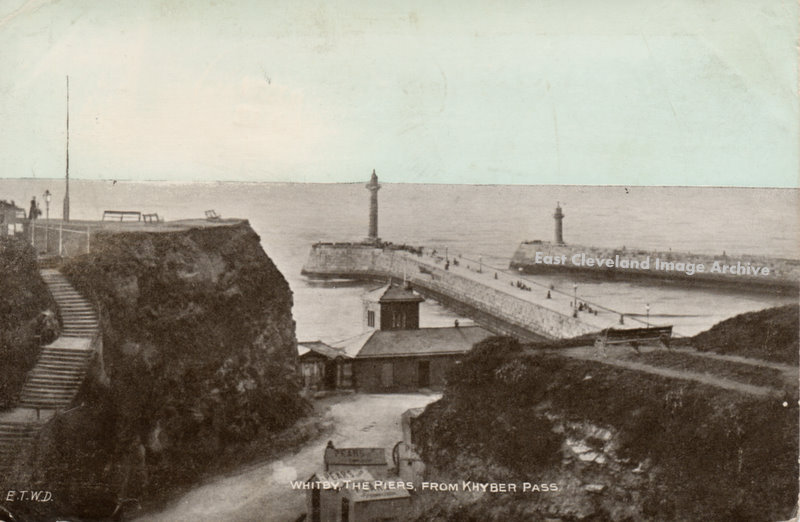
1905 is the date we have for this postcard of Khyber Pass and the piers at Whitby. It may be older as the wheels of a bathing hut can just be seen near the buildings halfway down the bank.
Image courtesy Ken Johnson.
|
|
||
 1905 is the date we have for this postcard of Khyber Pass and the piers at Whitby. It may be older as the wheels of a bathing hut can just be seen near the buildings halfway down the bank. 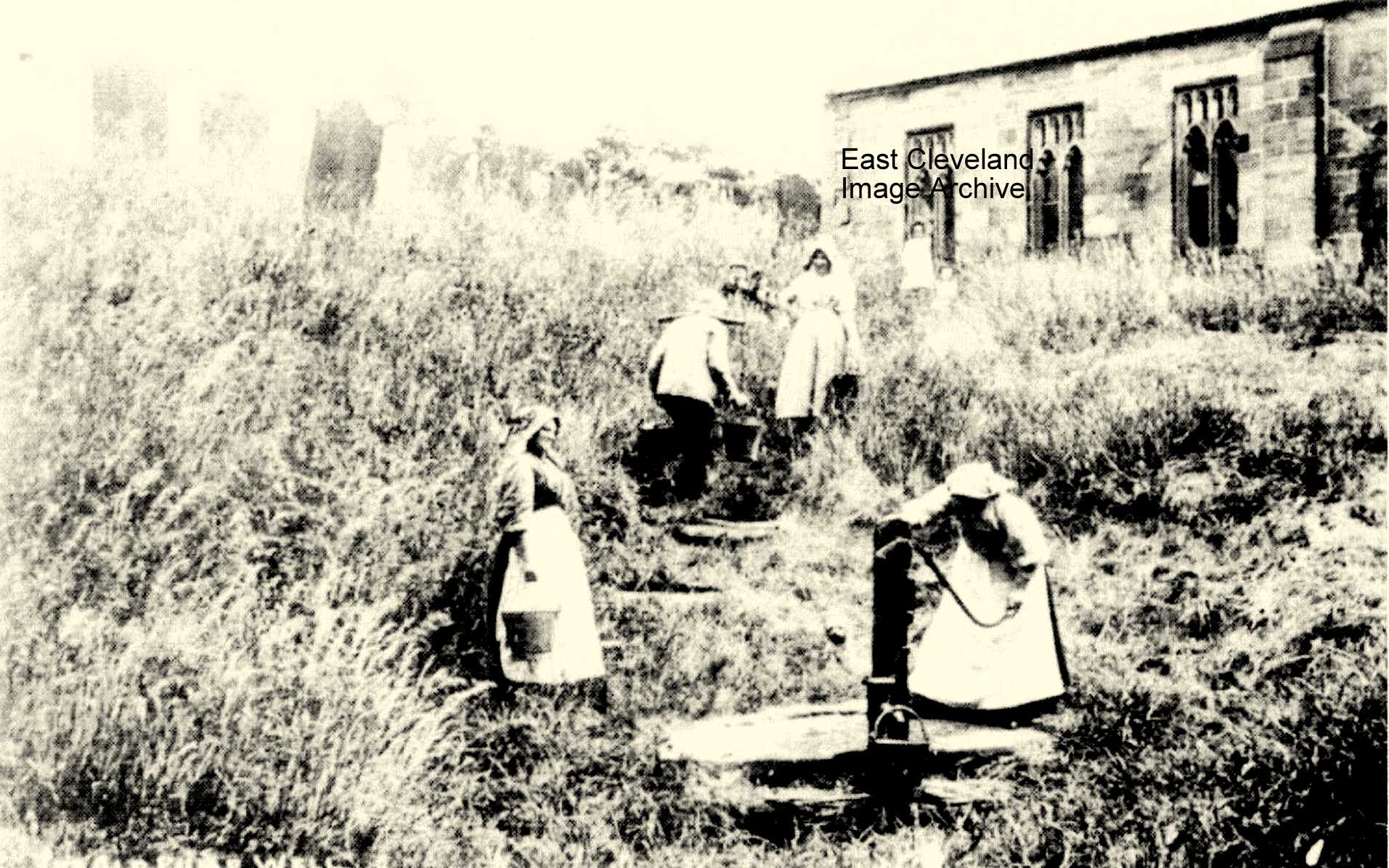 This probably posed image of young ladies collecting water from St Hild’s well, which is situated to the rear of the parish church in Hinderwell. The well being the reason for Hinderwell so being named, the well today is more of a monument presentation, no lever pump to possibly be vandalised! Image from a postcard courtesy of Maurice Grayson. 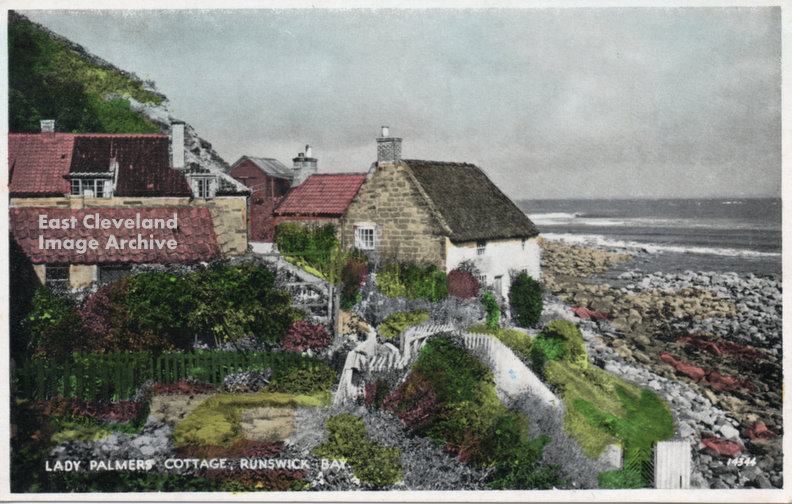 So called as it used to be part of the Grinkle Park estate and originally owned by Sir Mark Palmer, today it is part of the Mulgrave Estate. Also traditionally called the ”Thatched Cottage” it is perched on the western end of the lower sea wall at Runswick Bay. The cottage was later used as an holiday home by Vet Alf Wight, better known as ”James Herriot”. Image from a postcard courtesy of Ken Johnson  A leisurely day in Staithes Harbour. The fishing cobbles are drawn up the beach, adults and children, take it easy on a sunny afternoon around 1890. Image courtesy of Maurice Grayson. 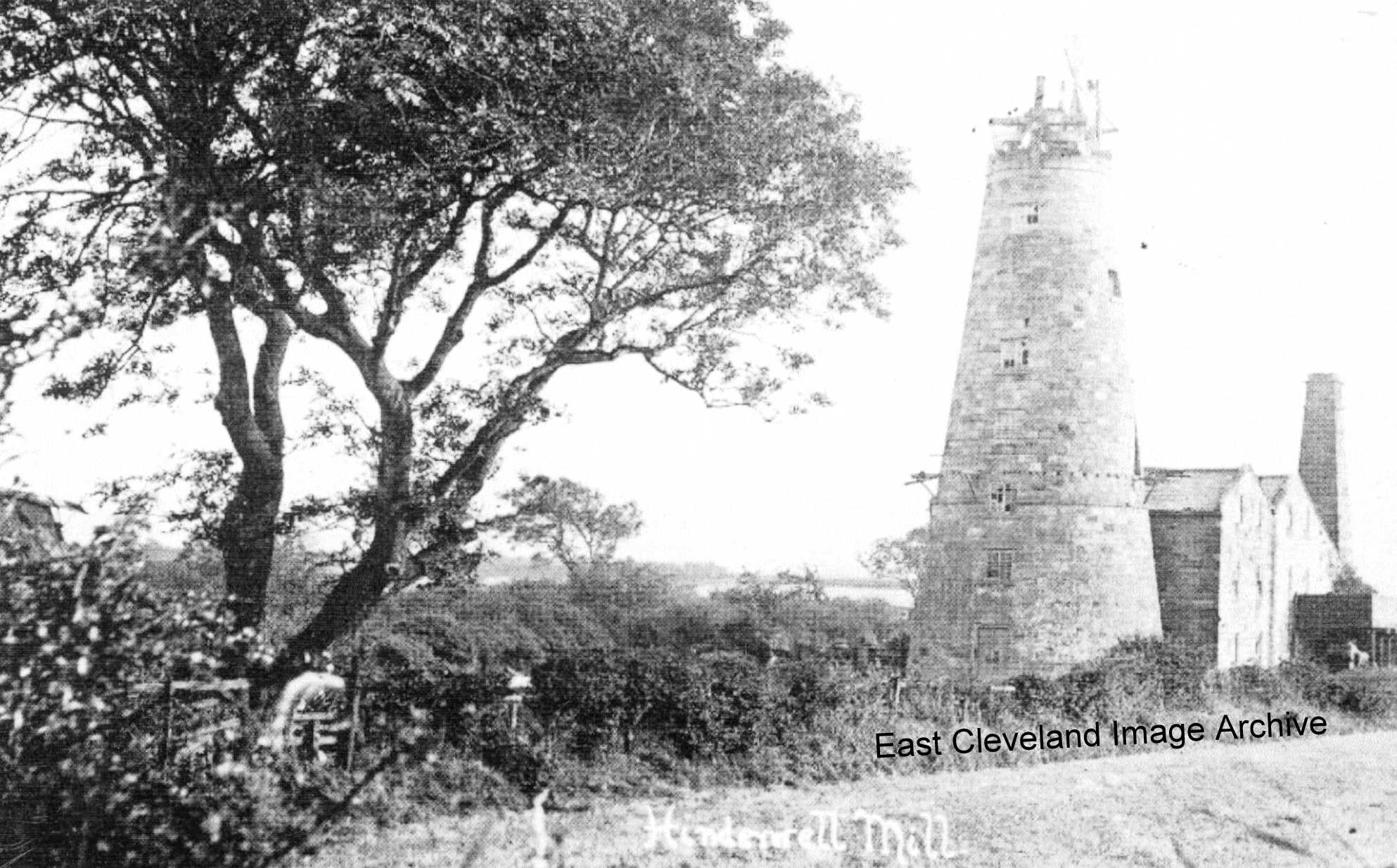 An postcard view of the Hinderwell windmill, interestingly although of poor quality (the Archive hopes to find a better quality image in time!) the sails and the cap (exposing the windshaft) appear to be missing. Image courtesy of Maurice Grayson. 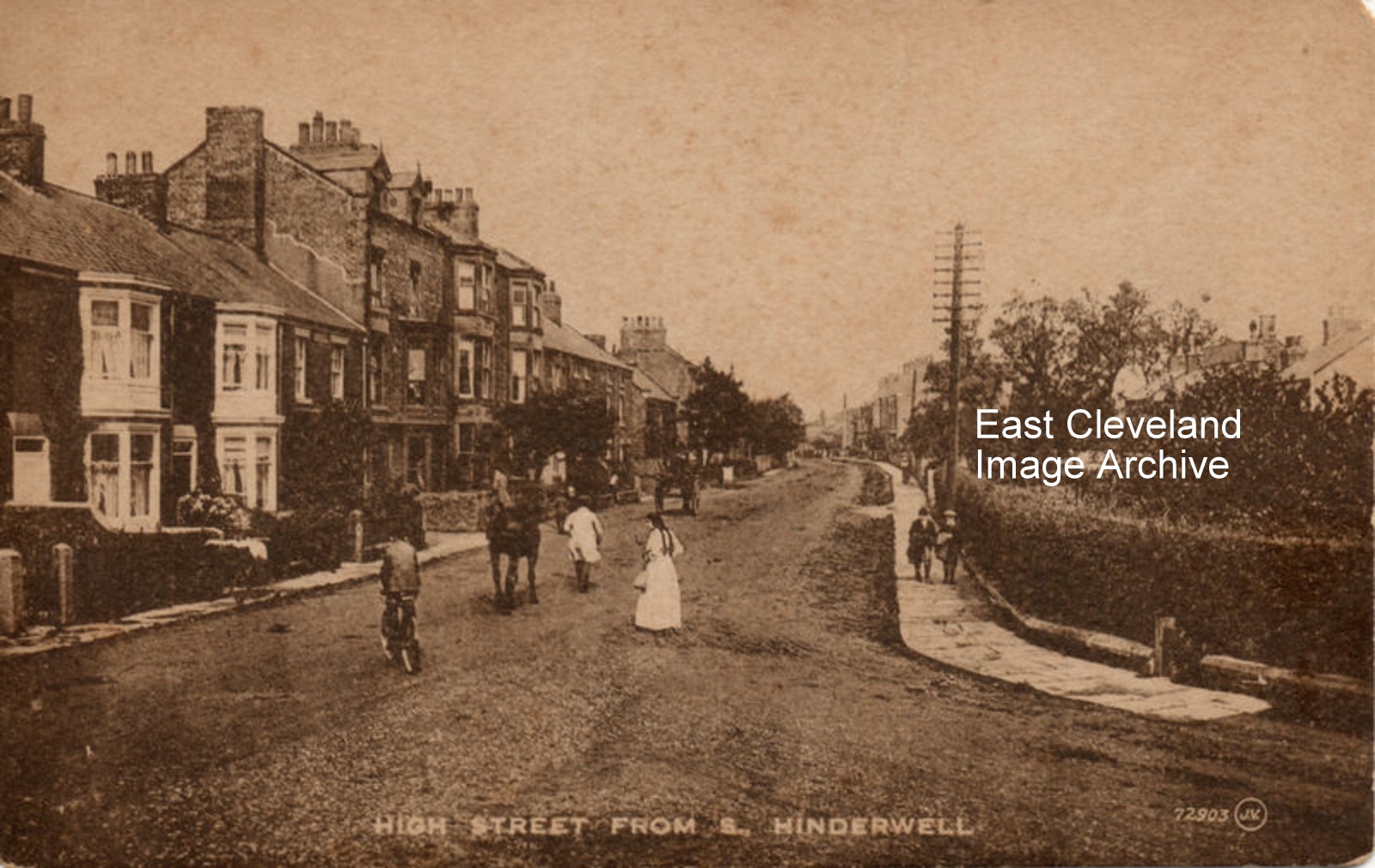 High Street, Hinderwell from the south, another Valentine’s postcard view; the leisurely pace of life evident in this view would suggest an early 20th century date. 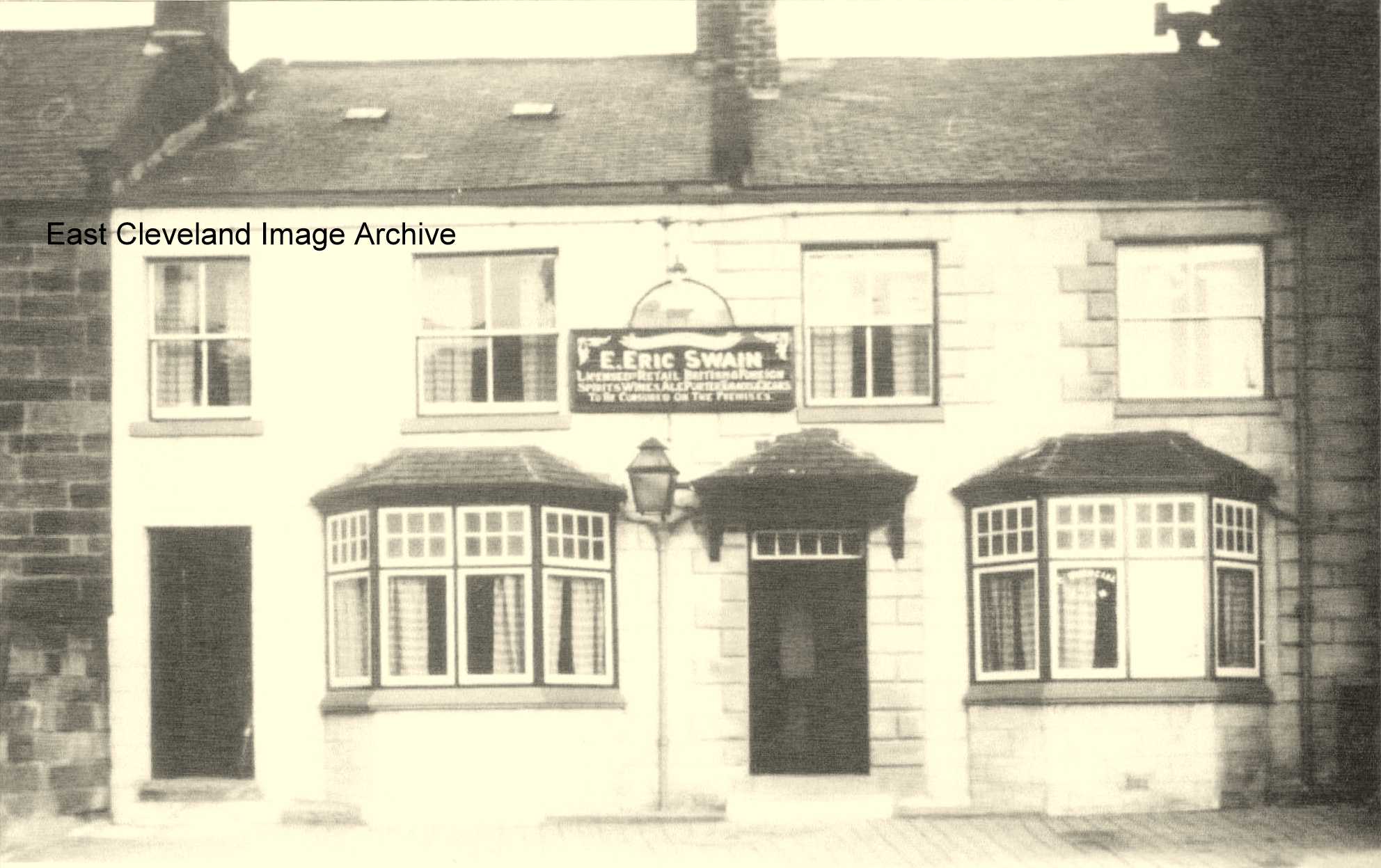 The other primary ”place of refreshment” on Hinderwell High Street was the Brown Cow sited some 80 yards furth south in Hinderwell. Eric Swain whose name appears as licensee on the board above the door in this image was minehost for many years. Elaine Meadows added: “John Jefferson was the innkeeper in the early 1860’s (Jefferson female side family name of the Tyermans of Pond Farm and Holme Farm). Elizabeth Seymour late of High Street and The Warren , Hinderwell; daughter of Joseph Henry Tyerman (Senior) also ran the Brown Cow.” Further information has been added; Glen Bennett: “My grandmother Mary Elders was from a Whitby family, whilst tracing her family tree I found my great, great, great grandfather John Featherstone; he was landlord of the Brown Cow in the 1881 and 1891 census. Been there for a pub lunch and pint.” Jackie Rushton assisted with: “My 4th Great Grandfather William Smallwood 1781-1870 was also a landlord of the Brown Cow Hinderwell in the 1820’s, he was also the blacksmith of Hinderwell.” Kathrine Gray advised: “My grandfather Harry Shaw was born in the Brown Cow in 1910. At the time they had a house keeper, there was a brother called Raymond and two sisters, Doris and Mabel.” Ann Newcombe assited and asked: “My great aunt Ellen Ann Boyes was married to a John Featherstone in 1932. He was a policeman at Barnby on his death in 1943. She moved into the Brown Cow to look after John Feathstone’s son (I understand from his first marriage) as his housekeeper, who was landlord at that time. Any information would be a bonus!” Can any of our reader assist?. Image courtesy of Maurice Grayson and thanks to Elaine Meadows (nee Tyerman), Glen Bennett, Jackie Rushton, Kathrine Gray and Ann Newcombe for the updates. 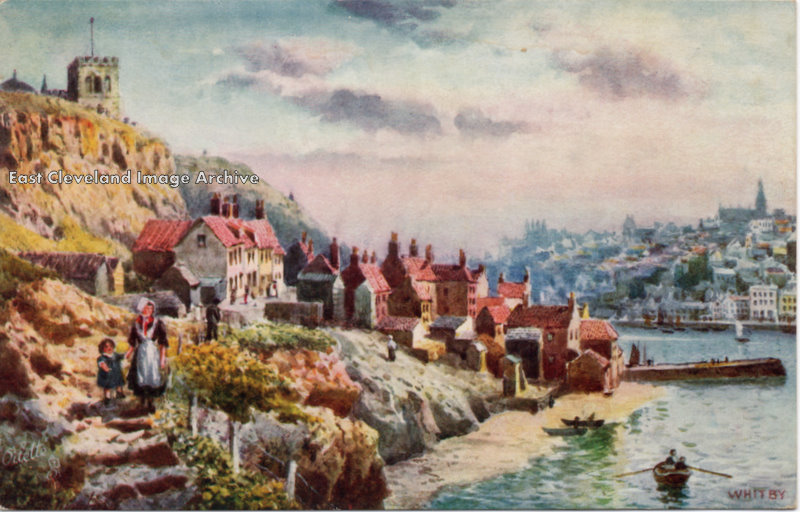 A stylised postcard from the Oilette series, with a different view of Whitby. Taken from the steps approaching the shorter east pier, it gives a different perspective with Whitby seeming to gather around the harbour, St Mary’s Church tower appears over the cliff on the left of the scene. An idylic scene. Image courtesy of Ken Johnson. 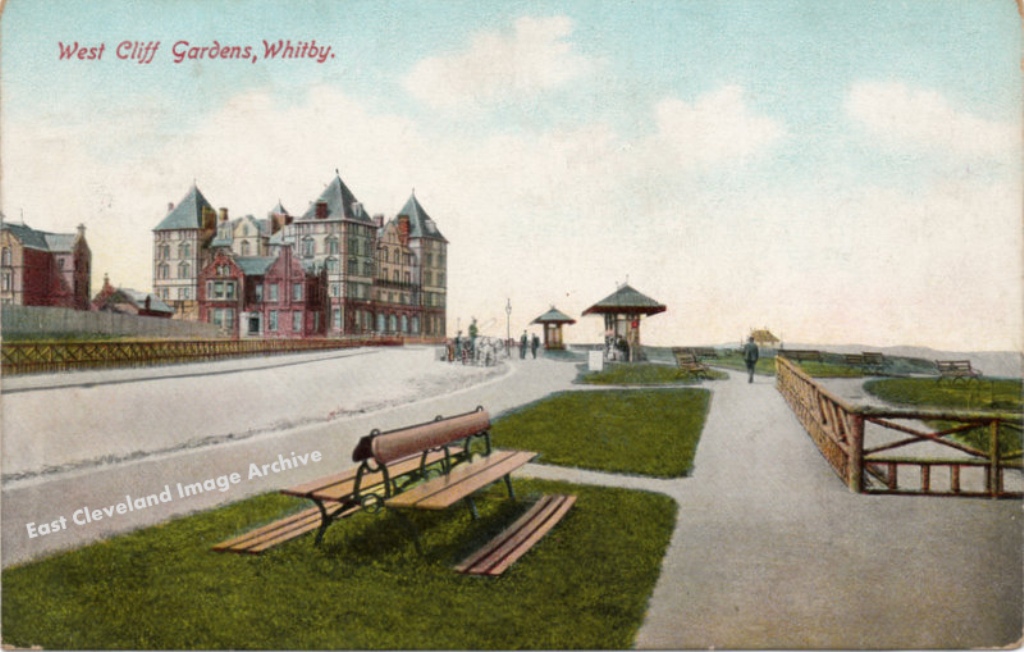 This lovely image which includes MetropoleHotel (now Metropole Towers), Whitby and as it describes the gardens, we presume before the Cliff Lift was installed; is from a beautiful hand tinted postcard. The difference from modern times is further emphasised by the lack of road traffic; no coaches or cars lining the side of the road! Image courtesy of Ken Johnson. 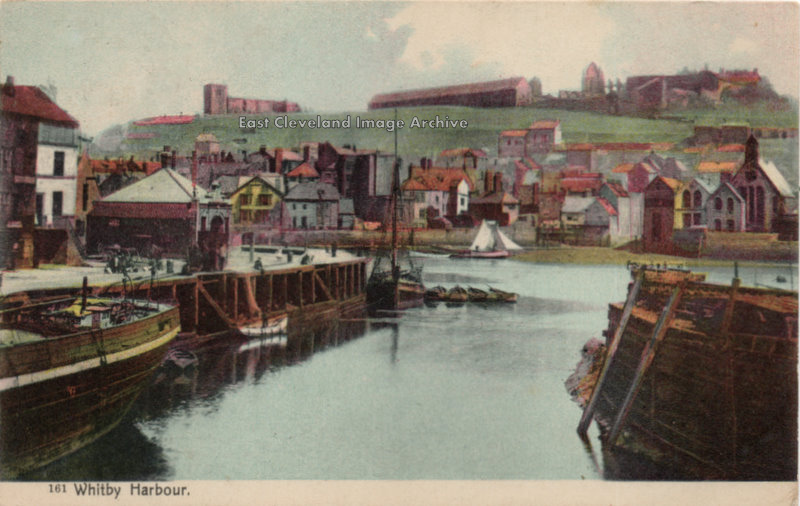 This coloured postcard of 1905, shows the upper harbour, many of the buildings and the dock itself have been demolished and altered out of recognition compared with modern photographs of the same scene. New Quay Road now runs through the Angel Hotel Vaults building on the quay side, and much of the dock was filled in and developed. Across the harbour, to the left of the now demolished St Michael’s Church, the wide slipway to the harbour was known as Alders Waste. Image courtesy of Ken Johnson. |
||
Recent Comments